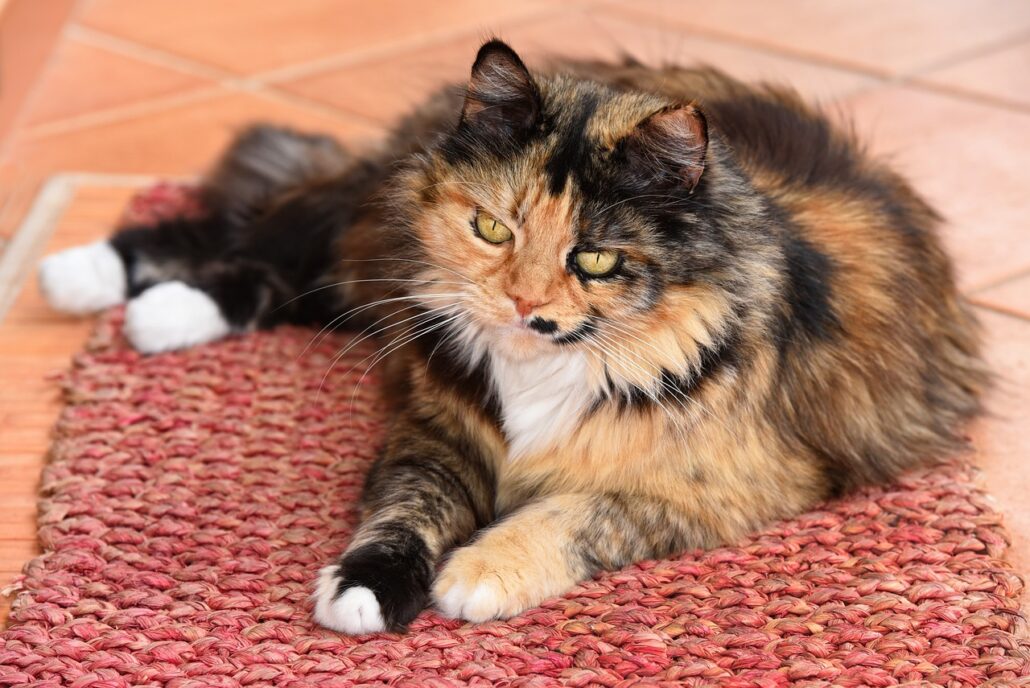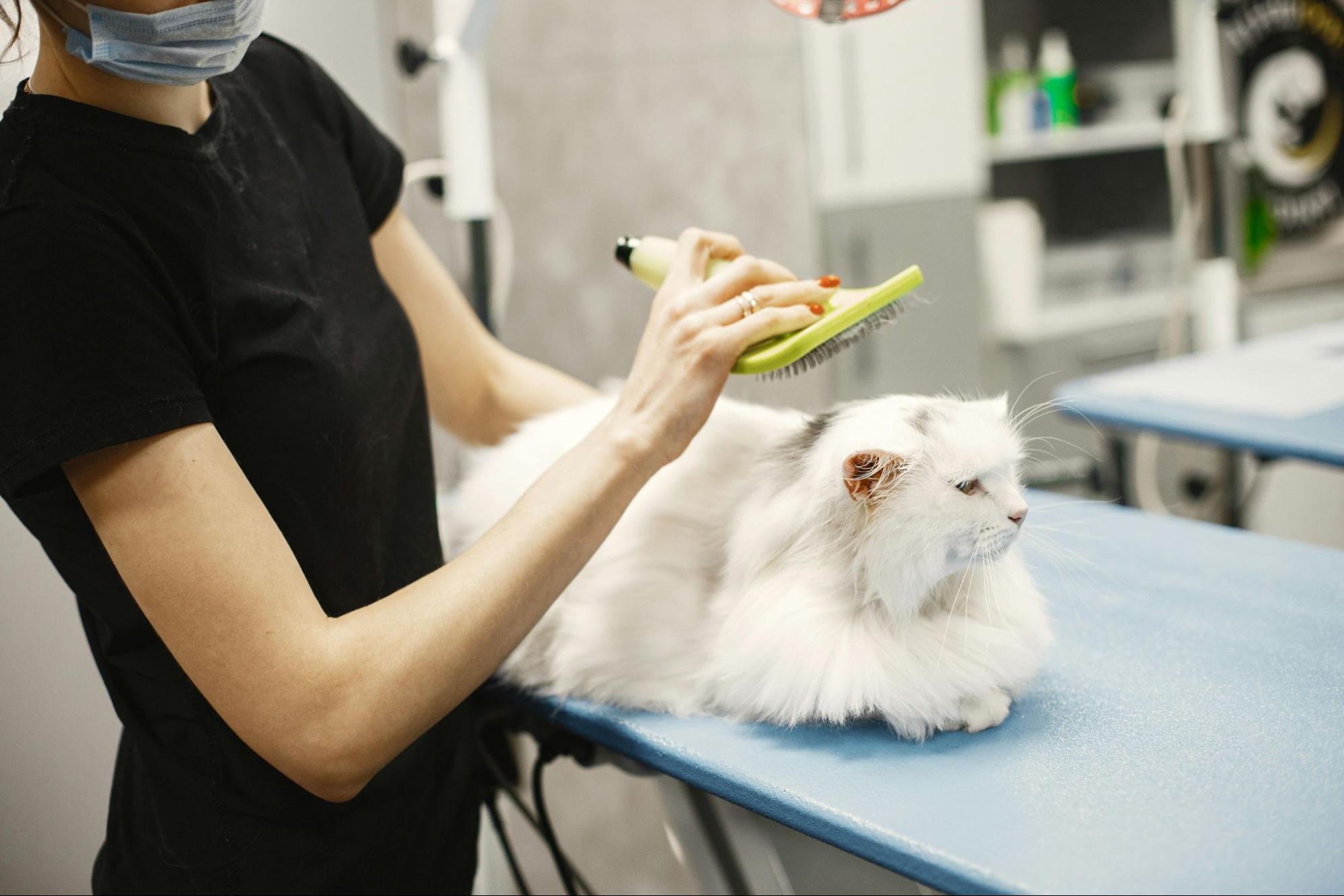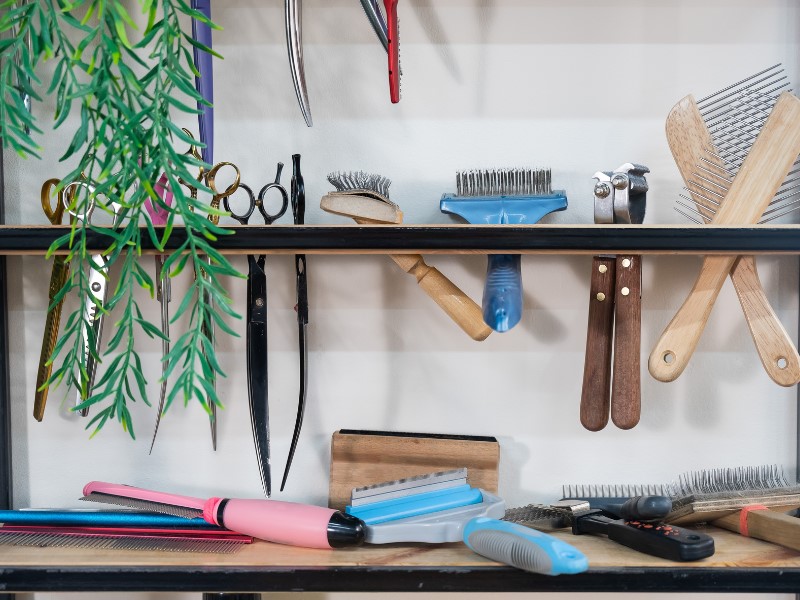Cat Mats: What They Are and How to Remove Them Safely
Bad fur day? Your cat doesn’t like it any more than you do. In some cases, you can “cure the fur” with a few swipes of a comb. But if your cat has mats, you’ll need to take a different approach.
Mats don’t easily brush or comb out. Fur that has become intensely entangled often needs to be removed with scissors or clippers, and you’ll need to know how to remove them safely.
Kitty Spaw offers cat grooming for matted fur as part of our mobile grooming services. Here’s how we remove mats from your cat’s fur and prevent them from coming back.
What Is a Mat?
Mats are clumps or tangles that form in a cat’s fur when loose hair, dirt, and other debris intertwine. These snug knots can be quite stubborn, and the longer they go unaddressed, the worse they become.
Certain breeds are more prone to mats than others. Long-haired breeds like Persians or Maine Coons tend to get more knots than others because of their luxurious coats.
The real problem isn’t aesthetics, though. Mats can be seriously uncomfortable for cats because they pull the hair and prevent oxygen and moisture from reaching the skin. The matting will inevitably get worse and can lead to health problems, like skin conditions, fur loss, itching, or even infections.
Since mats tend to occur in areas like the underbelly, behind the ears, and between the legs—spots that your feline can’t groom well on their own—they often need help removing mats.

How to Remove Mats Safely
Removing mats from your cat’s fur requires patience, the right tools, and gentle handling. It’s not a quick and easy process, and cats often become nervous during mat removal. This is why it’s important to let a trained professional remove mats from your cat’s fur. Here’s a closer look at our process:
1. Create a Calming Environment
Cats tend to get nervous with any type of grooming situation, especially if you are taking them to a groomer’s salon. Our CFMGs take a different approach: we come to you so your cat can remain in familiar surroundings. We use gentle techniques and constantly reassure your cat to keep them calm.
2. Assess the Mat
Our expert groomers assess the mat, including the size and severity. Small mats are easier to remove with combs and usually don’t require cutting, which is safer for your cat. Larger mats may require a mat splitter or cutting, especially if it’s close to the skin.
We always choose the safest option for your cat based on their specific needs.
3. Detangle Gently
We begin mat removal with a gentle detangling using pet-safe products and techniques. We hold the base of the mat to prevent pulling on the skin as we gently work through the surface of the mat. Our goal is to loosen the fur as much as possible.
If the mat is too tight or close to the skin, detangling won’t be as effective. Pulling can hurt your cat and damage their skin, so we will skip to Plan B.
4. Slice the Mat
Our de-matting tools allow us to carefully slice through the mat. We work in small sections to break it up rather than trying to pull it out all at once. This is the most time-consuming part because we work slowly and deliberately to avoid pulling on the skin.
5. Cut the Mat (If Necessary)
In some cases, we will need to cut the mat out of your cat’s fur. To do this, we use blunt-tip scissors and place a comb between the scissors and the skin to avoid potential injury. We avoid cutting too close to the skin in case your cat panics and reacts quickly.
6. Check for Potential Issues
Once the mat is removed, we check your cat for potential signs of distress, such as infection or dead skin that may cause itching. We may recommend a medicated bath or a visit to your vet to treat signs of infection.
7. Brush the Remaining Fur
We leave every cat looking better than before. Our team will brush your cat’s remaining fur to smooth it out and cover the spot where the mat was.
How to Prevent Mats from Forming
The best offense against mats is a good defense. You can help prevent mats from forming by doing the following:
Regularly Brush Your Cat
Brushing your cat removes loose fur and buildup that could eventually cause matting. Focus on areas that are prone to matting, such as the legs, belly, between the toes, and around the neck.
Keep Your Cat’s Coat Clean
Dirt, oil, and debris contribute to matting. In between groomings, make sure you bathe your cat to keep them clean.
Check for Tangles
Inspect your cat’s fur for small tangles and comb them out. A wide-toothed comb can gently untangle the fur.
Keep Up with Vet Visits
Matting may be a sign of poor health, such as arthritis, making it hard for your cat to groom itself. Maintain regular checkups to spot potential medical issues that could contribute to matting.
Get Regular Professional Grooming
Professional cat grooming can help reduce or eliminate matted fur. Grooming keeps your cat’s coat clean and in good condition.
Professional Cat Grooming You Can Trust
Kitty Spaw’s Certified Feline Master Groomers offer mat removal as part of our mobile cat grooming services. We’re committed to using safe tools and techniques to help your cat feel and look their best. Contact us today to learn more or schedule a service.




